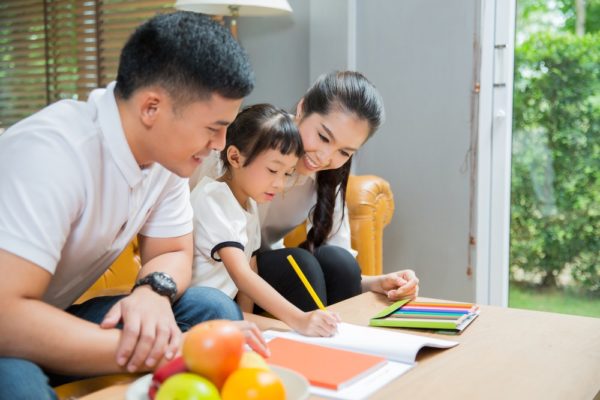In more than 60 percent of all two-parent households, both parents work, and in nearly all of these households, at least one parent is employed. This means that the vast majority of parents in our country experience regular and prolonged periods of time away from their children. Since parental involvement is one of the most influential factors in students’ academic success, the question then becomes how to help working parents stay abreast of what their child does when they are apart.
As a lead teacher at a YMCA Early Childhood Center, I believe children of all ages benefit from having their parents and teachers on the same page with their growth, health, and education on a regular basis. We offer care for more than 3,500 children (from infants through preschoolers) every year.
Being a YMCA facility, we teach kids to make healthy choices, as well as teaching them the ABCs, and other important life skills, like good sportsmanship and how to be themselves. We know that the values and skills children learn early on become the building blocks for their future lives.
Good Habits Start Early
If you eat healthily as a child, you become more used to those kinds of food than unhealthy foods. For example, I myself didn’t grow up eating very healthy food—eating out was easier since both of my parents worked two jobs. Now that I am an adult, I don’t always make the best eating choices. On the other hand, when my sister was growing up, my mom was able to stay at home and give her home-cooked meals every day, and as a result she is fit and eats healthy foods all the time.
At the Early Childhood Center, I encourage healthy eating habits by encouraging them to eat (or at least try) the food we provide, and modeling healthy eating and drinking habits while I am in the classroom. I also try to instill healthy habits by taking the children outside at least 60 minutes a day and doing small physical activities inside like yoga and GoNoodle throughout the day.
Using Smartphones to Engage Parents
Because our working parents only see their children a few hours a day, we want to keep them updated about all the fun things their children are doing during the day, and we also like to send home helpful information about health and wellness.
For a long time, we communicated with parents using daily sheets we would type on the computer, print, and then make copies of. We used up a lot of paper this way. We also sent out a monthly newsletter featuring upcoming events and lessons. Personally, I prefer to communicate on a daily basis (both at drop-off and pick-up) so we can know anything that would be beneficial during the day and we can give parents an update of what happened each day.
(Next page: Streamlining processes, better connecting parents and children)
This whole process became a lot more streamlined when we began using the parent-teacher communication app Bloomz, which we started using as part of a pilot program through the Ohio American Academy of Pediatrics (AAP) in early 2017. With the pilot, we were able to share information about a wide range of topics, including how to reduce sudden infant death syndrome (SIDS), constructive disciplining, screen-time management, and reading to children, directly to parents’ smartphones.
Paperless communication allows us so much more flexibility and speed when it comes to contacting parents and families. We now encourage parents to message us electronically, so we get a notification on our classroom app and can get back to them in a timely manner. We post the children’s artwork and writing from around the classroom on a daily basis, as well as pictures of the kids.
We can also collect all of these materials into a portfolio for each child. Parents now get reminders on their phones the night before extra activities such as gym, art, and music. I think the parents are happy to have a specific place where they can view pictures of their children doing activities throughout the day, and like and comment on posts in the same they do on Facebook.
Connecting Parents and Children
Since the switch to paperless communication, I’ve noticed an interesting difference in behavioral issues with my children at pick-up. I think it is because, instead of a parent reading what we did that day as they pick up their child, they come in the classroom already knowing what we did from reading the posts, and this makes the child feel more connected with their parents.
I also had a student who was out sick when we cut open a pumpkin and cleaned it out. The child came back to school the next day and told us his mom showed him the pictures we had posted and she then went out and got a pumpkin and did the activity as a family that night.
It’s become common to hear our children ask, “Are you going to post that?” after we take a picture of them. After all, every kid wants their parents to pay attention to them. (“Watch me, mom!”) And every parent wants to know what their child is doing during the day. Parents and children are the most important people in each other’s lives, so it’s vital to keep them connected, especially in the early years.
We live in a world full of new technology that can keep parents and children more connected than they’ve ever been, so why wouldn’t we take advantage of every opportunity?
- 6 ways to boost district engagement with a unified communications platform - January 30, 2025
- 3 edtech tools for station rotation in early learning - January 30, 2025
- Navigating AI in education: The future of human teaching - January 29, 2025

